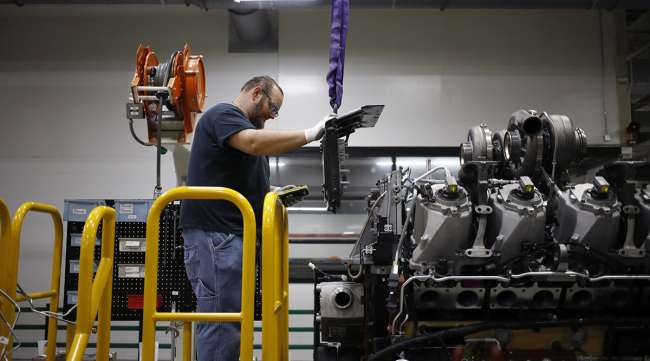Business Activity Contracts for Fourth Straight Month

[Stay on top of transportation news: Get TTNews in your inbox.]
U.S. business activity contracted in October for a fourth consecutive month as concerns about inflation and sluggish demand weighed on the outlook.
The S&P Global flash composite purchasing managers output index decreased 2.2 points to 47.3, the group reported Oct. 24. Readings below 50 indicate contraction.
Manufacturers and services providers’ views on the outlook also deteriorated in October, leading the composite future index to fall to its lowest level since September 2020.
A measure of business activity at service providers slid to 46.6 in the month, marking the second-worst reading since May 2020. Firms attributed the decline to weak client demand, rising interest rates and stubborn inflation, the report showed.
Meanwhile, the flash manufacturing PMI dropped to 49.9. While barely indicating contraction, the figure was the weakest since mid-2020. The group’s gauge of new orders at factories contracted for the fourth time in five months. Output expanded modestly.

TT's Eugene Mulero joins host Mike Freeze to discuss the midterm elections, and what the fight for control of Congress will mean for trucking. Tune in above or by going to RoadSigns.ttnews.com.
The surveys “present a picture of the economy at increased risk of contracting in the fourth quarter at the same time that inflationary pressures remain stubbornly high,” Chris Williamson, chief business economist at S&P Global Market Intelligence, said in a statement.
“However, there are clearly signs that weakening demand is helping to moderate the overall rate of inflation,” Williamson said.
The group’s composite gauge of input prices ticked up from the lowest level since January 2021, while the prices charged measure eased to its lowest level since December 2020. However, both gauges remain elevated.
In the face of softening demand, service providers reduced head count in October. The report noted that this included layoffs and not replacing those who had voluntarily left.
— With assistance from Chris Middleton.
Want more news? Listen to today's daily briefing below or go here for more info:




